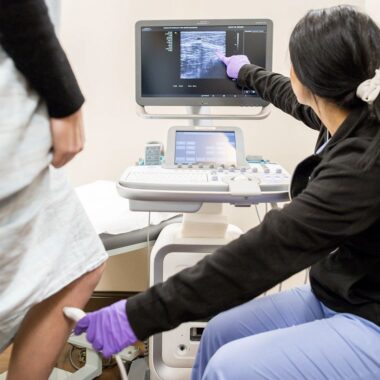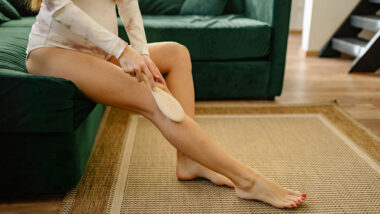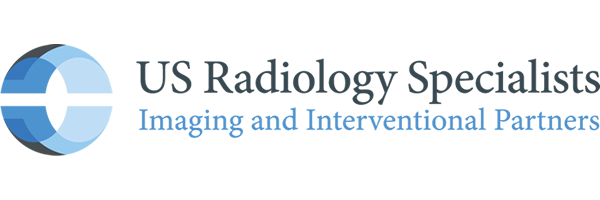No one wants to look down at their legs and feel self-conscious or embarrassed by how their unsightly veins look. Questions like, “How did I get these?” and “how can I get rid of them?” are frequently asked questions in vein care centers. There are many questions and misconceptions around vein disease, so we’ve gone straight to the source and asked Vittorio Antonacci, MD, vascular and interventional radiologist at Charlotte Radiology, for the truth.
Dr. Antonacci is board-certified and subspecialized in venous and lymphatic medicine, making him an expert at identifying vein disease and treating it at its source. He debunks five common myths about vein disease and offers tips on how to boost your vein health.
MYTH: Avoiding high heels can decrease my chances of getting vein disease.
Dr. Antonacci: “While wearing shoes with an elevated heel won’t directly cause you to develop varicose veins, it can affect the blood flow to the calves and feet. When wearing shoes with heels, your foot stays in a flexed position. This interferes with the normal calf pump mechanism which helps blood pump back up to your heart. Over time, the increased pooling of blood in the veins can affect vein health in the legs.”
MYTH: Crossing your legs can lead to spider and varicose veins.
Dr. Antonacci: “It’s been validated by several large studies that crossing your legs does not cause varicose veins, however, prolonged sitting without a break can increase the amount of pressure you’re putting on your veins. Over time, this can harm vein valves which help circulate blood throughout your body. It’s recommended to stand up or sit down for 5 minutes every hour if you are either on your feet or sitting for long periods of time.”
MYTH: Varicose and spider veins are a part of getting older.
Dr. Antonacci: “MYTH. This is one of the biggest myths about vein disease. Contrary to popular belief, people of all ages can get spider or varicose veins. Varicose veins are a result of damaged or weakened valves in the veins. The primary risk factor is genetics, with varicose vein disease often running in the family. In our outpatient office, the youngest patient presenting with varicose veins was 12 years old at the time they came in. In a hospital setting, our interventional radiologists will treat children and infants that are born with congenital varicose veins.”
MYTH: Removing varicose veins requires invasive surgery.
Dr. Antonacci: “Twenty to twenty-five years ago, invasive surgery was the gold standard of treatment for veins. Over the last two decades with the advancements in technology and medicines, treatments have improved greatly. Most patients are able to be treated with minimally invasive techniques such as Endovenous Laser Treatment (EVLT) which closes the problem veins internally without going ‘under the knife.’”
MYTH: My varicose veins aren’t bulging or painful, so I don’t have to do anything about them.
Dr. Antonacci: “Not necessarily. While the way veins look and the symptoms that can accompany them are often the reason our patients seek treatment, there are other physical signs of vein disease to consider. If you notice any skin changes, hair loss, or bleeding, you may want to schedule a consultation to learn more. Those symptoms can be signs of vein disease even if you have never experienced any pain in your legs.”
Do you have spider and/or varicose veins? It’s time to stand up, show up, and feel beautiful. Life is too short to feel self-conscious about your legs. Charlotte Radiology has been treating varicose and spider veins since 2001 through minimally invasive procedures. We can treat vein disease at the source with our physicians who are subspecialized in vein and vascular diagnosis and treatments.



